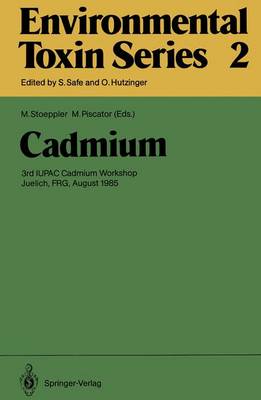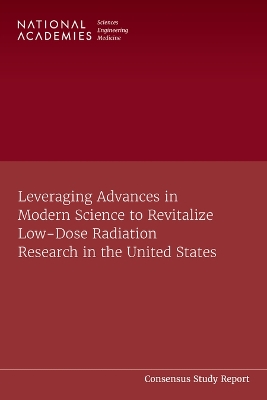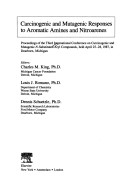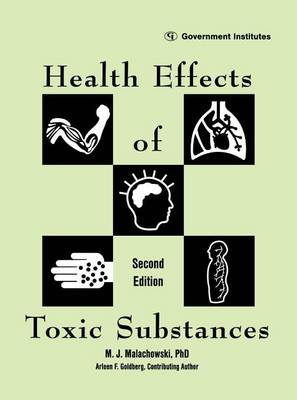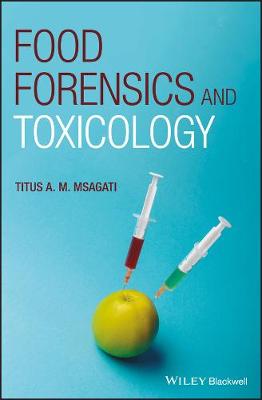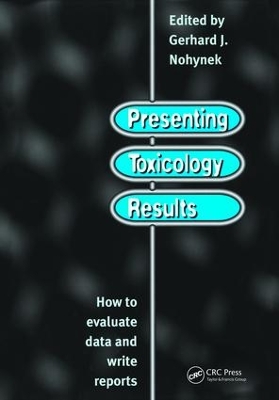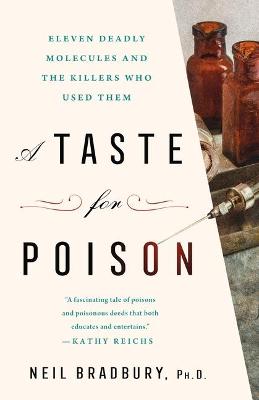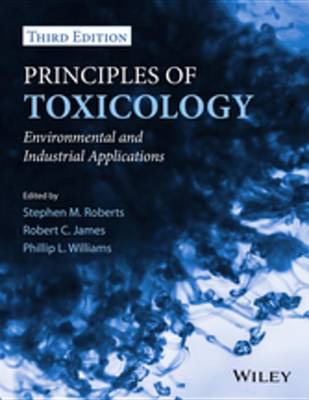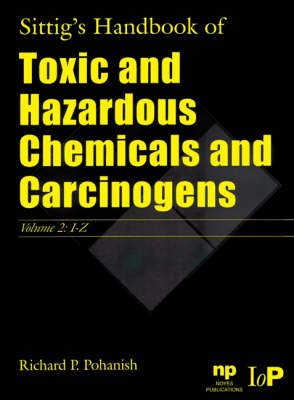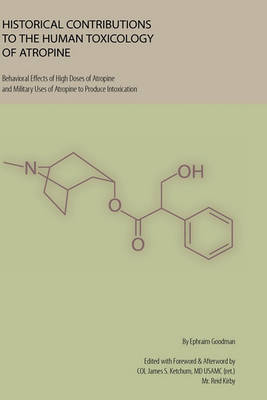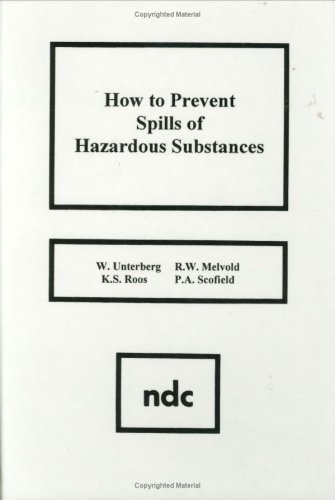Cadmium (Environmental Toxin, #2)
On May 25,1978, the Commission on Toxicology ofthe Division of Clinical Chemistry of the International Union of Pure and Applied Chemistry (IUPAC) established its Subcommittee on Environmental and Occupational Toxicology of Cadmium following aseries of Commission meetings in Kristiansand, Norway. I was appointed chairman ofthe new Subcommittee by the Commission on Toxicology (chairman at that time F. w. Sun derman Jr. ) in which I served from 1977 as an Associate Member and from 1979 as a Titul...
Radiation exposure at low doses (below 100 milligray) or low-dose rates (less than 5 milligray per hour) occurs in a wide range of medical, industrial, military, and commercial settings. The effects of exposure at these levels are not fully understood, but there are long-standing concerns that such exposure could negatively affect human health. Although cancer has been linked to low-dose radiation exposure for decades, there is increasing evidence that low-dose radiation exposure may also be ass...
Bees and Pesticides (Issues in Toxicology)
The effect of pesticides on bees is a hot topic of discussion with the current focus on neonicotinoids and the recent restrictions imposed on its use. Interest in these issues is likely to continue for the foreseeable future with the drive for increased agricultural production. This book will address the most up-to-date information and aims to present a balanced perspective of this much-debated topic with contributors from academia, industry and government. Coverage of issues related to toxicity...
Carcinogenic and Mutagenic Responses to Aromatic Amines and Nitroarenes
Health Effects of Toxic Substances
by M J Malachowski and Arleen F Goldberg
As with the previous editions, Introduction to Toxicology, Fourth Edition, continues to chart the evolution of the field of toxicology, from the use of natural toxins by ancient tribes through the developments established by Paracelsus, and progresses through to the current topics in the public interest. For centuries the study of toxicology has fascinated students. The book begins with basic toxicological principles, including an historical summary, dose-response relationships (NEW chapter), ex...
The 2007 Report on Frozen Dinners and Nationality Foods
by Philip M. Parker
A comprehensive guide, offering a toxicological approach to food forensics, that reviews the legal, economic, and biological issues of food fraud Food Forensics and Toxicology offers an introduction and examination of forensics as applied to food and foodstuffs. The author puts the focus on food adulteration and food fraud investigation. The text combines the legal/economic issues of food fraud with the biological and health impacts of consuming adulterated food. Comprehensive in scope, the book...
Calculation Methods for Industrial Hygiene Written in easy-to-understand language, students as well as practicing environmental health professionals will find that problem solving becomes a sixth sense after using Calculation Methods for Industrial Hygiene. Calculation Methods begins with a discussion of the fundamental units of mass, length, and time, and moves on to develop an understanding of the fundamental physical chemistry of gases and vapors - enabling environmental health professionals...
Written in such a way as to make it accessible to toxicologists who do not have English as a first language, this book focuses on evaluating, interpreting and reporting results of regulatory toxicology studies.
Micromycetes in Foodstuffs and Feedstuffs (Progress in Industrial Microbiology, v. 28)
by Z. Jesenska
This text provides the reader with an up-to-date overview on moulds and plant fungi in food raw materials, foodstuffs and feedstuffs, the incidence of toxic metabolites of moulds and their significance for the health of both man and farm animals. The introductory chapters are devoted to the influence of mycotoxins on the organism of man and farm animals. The incidence of micromycetes in food raw material and foodstuff (meat, meat products, milk, milk products, cereals, grains of corn, rice, flou...
Toxicology in Risk Assessment
Toxicology is an integral part of the risk assessment process. In this book, investigators from the scientific and regulatory communities describe recent technical developments in risk assessment embracing toxicology and its allied sciences, risk qualification and characterisation, risk management, and risk communication. Case studies pertaining to current issues involving chemical and environmental risks, including military and industrial scenarios, are presented. Chapters describe value and et...
Principles of Toxicology
by Stephen M. Roberts, Robert C James, and Phillip L. Williams
Principles of Route-to-route Extrapolation for Risk Assessment
by T.R. Gerrity and C.J. Henry
The 2007 Report on Canned Tomato, Catsup, Chili, and Barbecue Sauces, Tomato Paste, and Tomato Pulp and Puree
by Philip M. Parker
Seafood and Freshwater Toxins (Food Science and Technology)
This volume focuses on the pharmacology, physiology, toxicology, chemistry, ecology and economics of seafood and freshwater toxins. It covers the biological aspects of the bloom, the effects and actions of each toxin with emphasis on human aspects, and the analytical and preparative options for neurotoxic, diarrhetic shellfish toxins, and hepatotoxic or neurotoxic freshwater cyanobacteria toxins.
Handbook of Toxic and Hazardous Chemicals
by Richard P. Pohanish and Marshall Sittig
The fourth edition of this classic reference by Marshall Sittig presents expansive chemical, health, and safety data for over 1,500 chemicals in the plastics, pharmaceuticals/biotechnology, energy, cleaning solvents, agriculture and other industries. The chemicals are presented alphabetically and classified as a carcinogen, hazardous substance, hazardous waste, or toxic pollutant. Chemical data cover description, exposure limits, harmful effects, first aid, and storage among the other important...
Historical Contributions to the Human Toxicology of Atropine
by Ephraim Goodman
How can a chemical we need on a daily basis to keep us healthy be fatal at a different dose? Why should elements that are intrinsically dangerous be used in medicine? How did poisoners use the chemical properties of chemicals to cover their tracks? Emsley gives detailed histories of five of the most toxic elements - arsenic, antimony, lead, mercury, and thallium, highlighting some of the most famous murders and how the murderers used the chemical properties of elements to hide what they were doi...
Technical guidance for fixed facilities that produce these substances, store them, or transfer them to and from transportation terminals. Coverage of some 700 hazardous substances. No index. Annotation copyright Book News, Inc. Portland, Or.
Scorched Earth is the first book to chronicle the effects of chemical warfare on the Vietnamese people and their environment, where, even today, more than 3 million people—including 500,000 children—are sick and dying from birth defects, cancer, and other illnesses that can be directly traced to Agent Orange/dioxin exposure. Weaving first-person accounts with original research, Vietnam War scholar Fred A. Wilcox examines long-term consequences for future generations, laying bare the ongoing monu...
